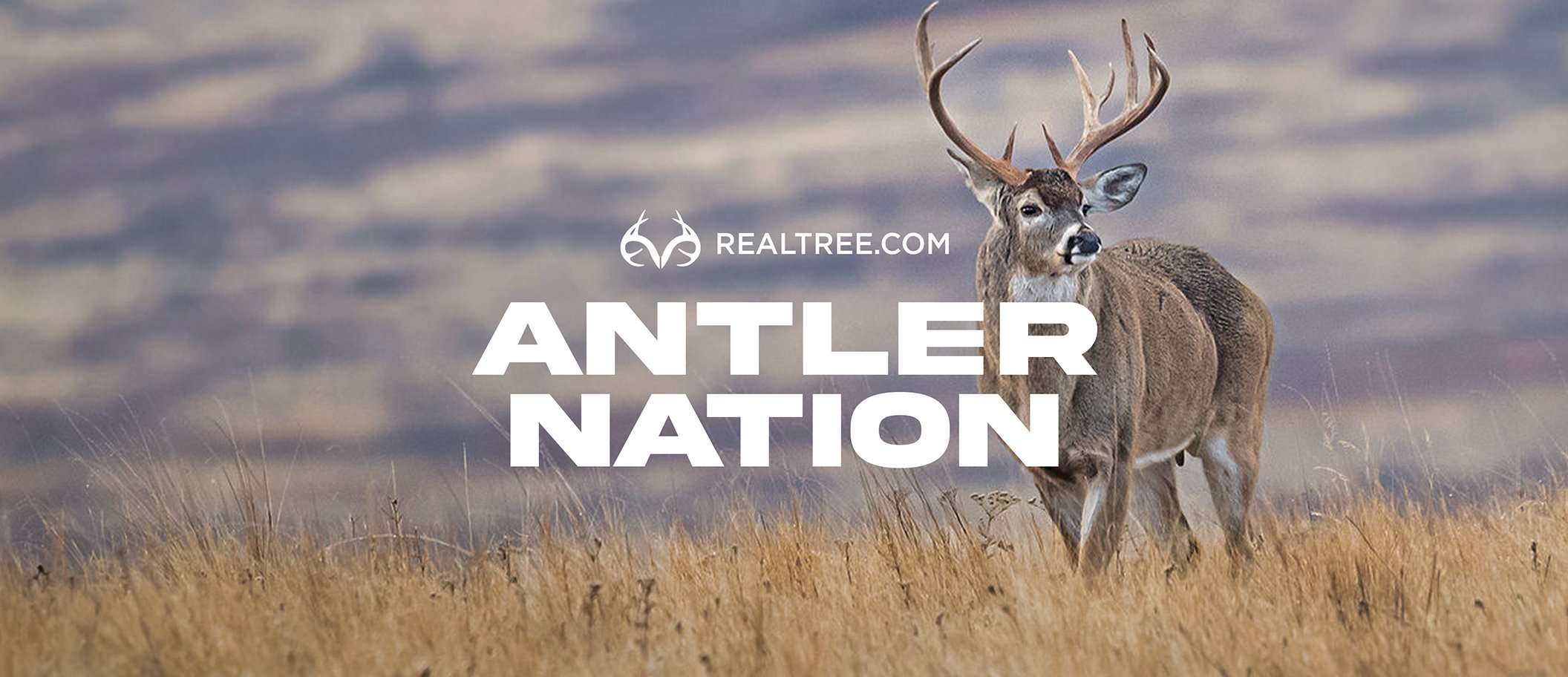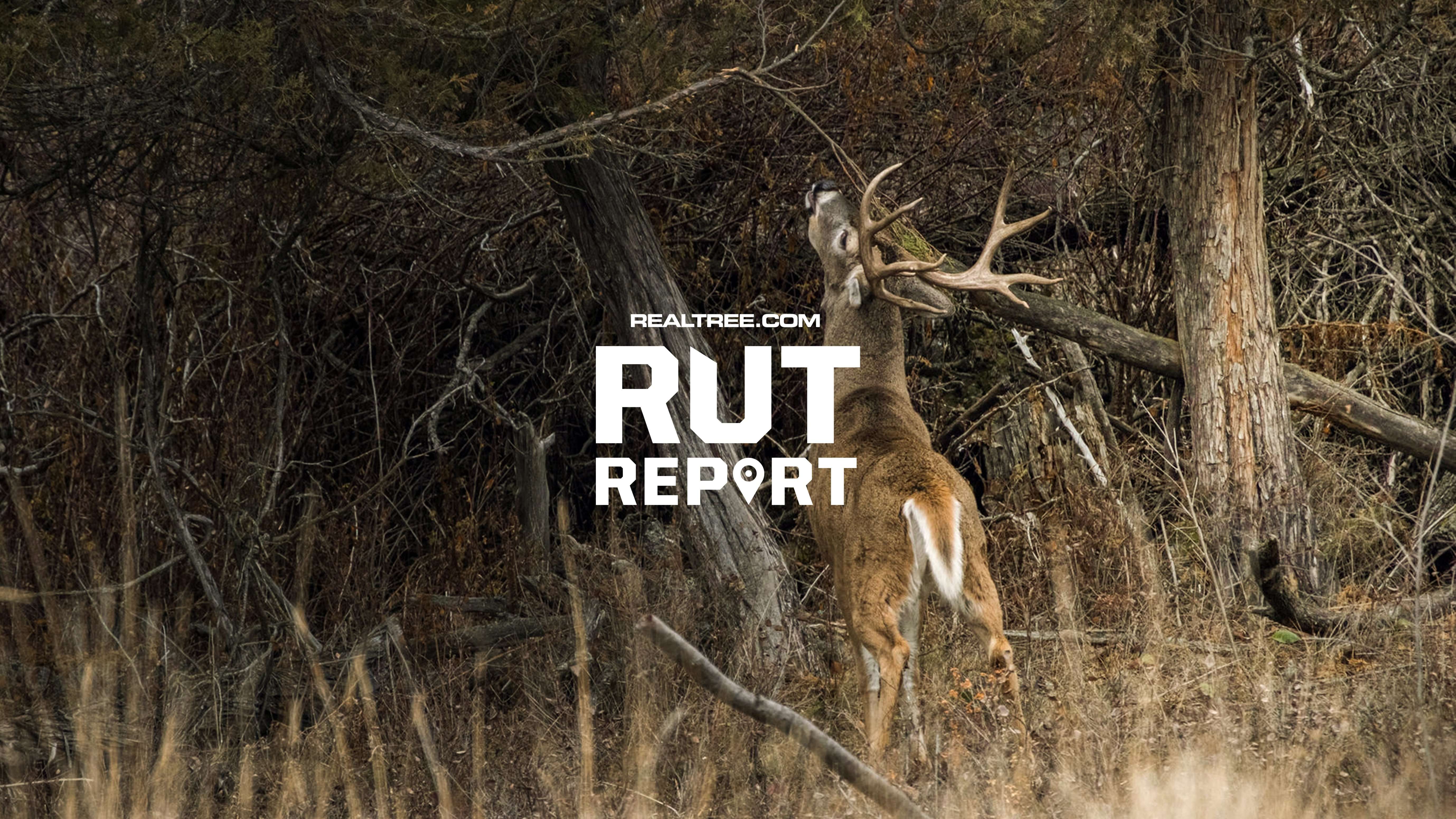If you want to be in the middle of the hottest rutting action, look for a setup with these tried-and-true ingredients

Do you know what the best rut stand actually is? Ideal setups combine several factors. Image by Realtree
I have shot rutting bucks from Virginia to Oklahoma to Alabama by tweaking this setup to the various terrains I’ve hunted. Many days, I’ve used treestands. Other times, ground blinds got the job done. Consult your maps and aerials, and adapt my strategy to the habitat you hunt. You’ll be sitting pretty in one of the best rut stands in America.
THE CRITICAL ELEMENTS
My universal setup consists of three main terrains:
A field of corn, soybeans or alfalfa, or a good-size plot of clover and brassicas. It does not have to be on the land you hunt but at least in close proximity. A prominent food source acts as a hub that drives the movement of does during the rut. Randy bucks will come and go where the gals are.
Ideally, a hardwood ridge is located 200 yards or so off the hub field and elevated slightly above it. Oak trees will drop acorns and create another major food source. It’s best if the woods and brush that connect the ridge and field are fairly narrow, creating a natural funnel that might be 150 to 300 yards across. That’s plenty wide enough for deer to travel on natural movement but narrow enough for you to cover and hunt effectively. Hang a stand or set a bind at the right spot, with good visibility and fresh buck sign around, and you will see most of the deer that rut up and down the ridge and cut across it.
A creek or small river. Biologists have long referred to whitetails as creek bottom animals. They sometimes feed and bed near a stream or river and always travel along it. Rutting bucks splash across shallows, and even swim deep water to get from side to side. You can also use a creek or shallow river and its edges to get to and from your stand undetected.
SETTING AND HUNTING THE STAND
My universal stand is killer for morning or afternoon hunts during the rut, with bow or gun. It’s devised for an all-day sit if you can hack it, because you never know what time of day you might see a testosterone-addled buck. I recommend you use a large, comfortable lock-on or ladder if bowhunting, and maybe do a natural ground blind if you’re gun hunting and the terrain is conducive.
Most days, plan to set up for a predominant west to northwest wind. Post in a tree or on the ground somewhere on the eastern or southern end of the ridge. Set up tight to a well-used doe trail marked with scrapes and rubs here and there. You might bowhunt that stand and kill a big buck trolling nose down on the trail. Or, you might sit with a muzzleloader or rifle and nail a big deer chasing a doe 75 yards to the west through the ridge timber. You never know, but it’s all good.
The universal stand is designed for stealth access (all your stands and blinds should be). Wade or boat-hop across a nearby creek or river to get in and out; you shouldn’t bump a deer if you’re quiet. Walk at the water’s edge so the bank and brush cover your moves. Another option is to slip into the ridge timber from the downwind corner or edge of a crop field.
Pack in water and snacks, and sit all day in the stand if you can. In a diverse habitat such as this, at least two or three doe units will be active. All those girls misting the field, ridge and stream bottom with estrus scent will bring bucks from all directions, so hunt long and hard, and stay sharp.
Don’t Miss: DOES THE MOON ACTUALLY AFFECT DEER?












